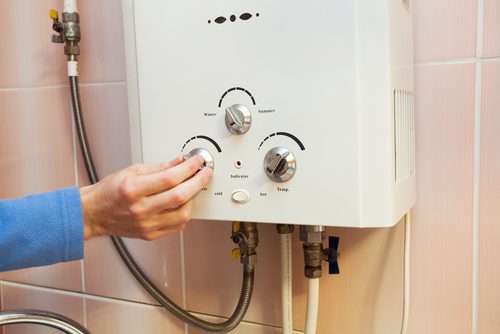Everybody will have their own individual way of thinking with regards to What Kind of Maintenance Do Water Heaters Need?.

Warm water is crucial for day-to-day comfort, whether it's for a revitalizing shower or cleaning meals. To guarantee your warm water system runs effectively and lasts longer, regular maintenance is key. This article gives sensible ideas and insights on exactly how to maintain your home's warm water system to prevent interruptions and costly fixings.
Intro
Maintaining your home's hot water system might appear overwhelming, however with a few easy steps, you can ensure it runs smoothly for years ahead. This overview covers everything from recognizing your warm water system to do it yourself upkeep ideas and understanding when to contact professional help.
Significance of Keeping Your Hot Water System
Routine maintenance not only extends the lifespan of your hot water system however also ensures it runs successfully. Overlooking maintenance can cause decreased performance, higher energy costs, and even premature failing of the system.
Indicators Your Hot Water System Needs Upkeep
Knowing when your hot water system requires focus can protect against major issues. Watch out for indications such as inconsistent water temperature, odd sounds from the heating system, or rustic water.
Understanding Your Warm Water System
Before diving right into upkeep jobs, it's practical to understand the fundamental parts of your warm water system. Commonly, this includes the water heater itself, pipelines, anode poles, and temperature controls.
Regular Monthly Upkeep Tasks
Regular regular monthly checks can assist catch small problems prior to they rise.
Flushing the Hot Water Heater
Flushing your hot water heater gets rid of debris buildup, boosting efficiency and prolonging its life.
Monitoring and Changing Anode Rods
Anode poles prevent corrosion inside the storage tank. Checking and changing them when broken is important.
Checking and Readjusting Temperature Level Setups
Readjusting the temperature level setups makes sure optimum performance and safety.
DIY Tips for Maintenance
You can carry out a number of maintenance tasks yourself to keep your warm water system in top condition.
Checking for Leaks
Regularly check pipes and links for leakages, as these can lead to water damage and greater costs.
Testing Pressure Alleviation Valves
Examining the stress safety valve ensures it works properly and stops too much stress build-up.
Protecting Pipelines
Shielding warm water pipes reduces warmth loss and can conserve energy.
When to Call a Professional
While DIY maintenance is useful, some problems call for specialist proficiency.
Complicated Problems Calling For Professional Help
Examples include major leaks, electric problems, or if your water heater is regularly underperforming.
Routine Expert Maintenance Perks
Expert maintenance can include detailed examinations, tune-ups, and making sure compliance with safety standards.
Verdict
Routine upkeep of your home's warm water system is important for efficiency, long life, and expense financial savings. By adhering to these suggestions and knowing when to look for professional aid, you can make sure a reputable supply of warm water without unforeseen disruptions.
How to Maintain an Instant Hot Water Heater
Before tinkering with your hot water heater, make sure that it’s not powered on. You also have to turn off the main circuit breaker and shut off the main gas line to prevent accidents. Also turn off the water valves connected to your unit to prevent water from flowing into and out of the appliance. 2. When you’re done, you have to detach the purge valves’ caps. These look like the letter “T†and are situated on either side of the water valves. Doing so will release any pressure that has accumulated inside the valves while at the same time avoid hot water from shooting out and burning your skin. 3. When the purge valves’ caps are removed, you have to connect your hosing lines to the valves. Your unit should have come with three hoses but if it didn’t, you can purchase these things from any hardware or home repair shops. You can also get them from retail stores that sell water heating systems. Read the user’s manual and follow it to complete this task properly. When the hosing lines are connected, open the purge port’s valves. 4. You should never use harsh chemical cleaners or solutions when cleaning your unit. Make use of white vinegar instead. It should be undiluted and you’ll probably use about 2 gallons. 5. Now flush your water heater. This task should probably take about 40 minutes. We can’t give you specific directions for this because the procedure is carried out depending on the type, model and brand of your heater. With that being said, refer to the user’s manual. 6. When you’re done draining the unit, you have to turn off the purge port valves again. Remove the hosing lines that you earlier installed on each of the water valves. Put the valve caps (purge port) back in their respective places and be very careful so as not to damage the rubber discs that are found inside these caps. 7. Now that everything’s back in place, check your user’s manual again to find out how to reactivate your water heating system. 8. Once it is working, turn one of your hot water faucets on just to let air pass through the heater’s water supply pipes. Leave the tap on until water flows smoothly out of it. https://www.orrplumbing.com/blog/2014/september/how-to-maintain-an-instant-hot-water-heater/

I stumbled upon that review on How to Maintain Your Water Heater & Prolong its Life while doing a lookup on the web. Enjoyed our entry? Please share it. Let another person discover it. Many thanks for your time. Come back soon.
Click Here